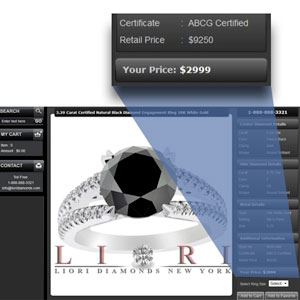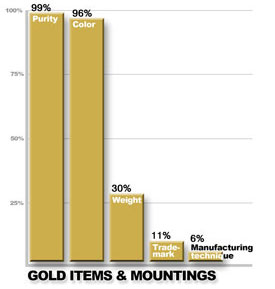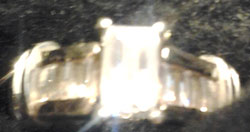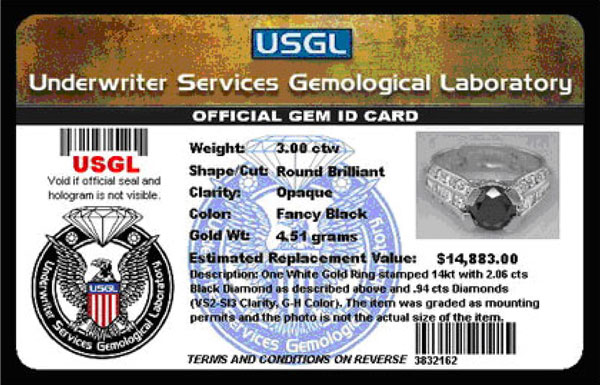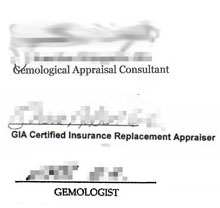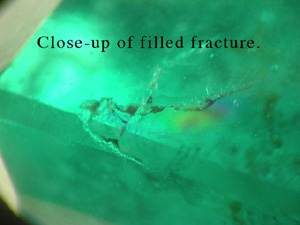Jewelry Insurance Appraisal Standards: JISO
Are you seeing jewelry appraisals like these?
Appraisals with missing information, inflated valuations, treatments not disclosed.
Appraisals from appraisers with bogus credentials, or no credentials, or even no name.
Appraisals with grading reports from unknown labs, or on pre-fab "authenticity" cards.
Appraisals with useless photos or none at all.
There's no reason insurers should settle for this.
Jewelry Insurance Standards have been around since 1997. Insurance industry approved jewelry appraisal forms, originally available through ACORD, are now available through JISO, free of charge at www.jiso.org.
What JISO Appraisals do
Following a standardized format, the JISO form prompts the appraiser for all information on any type of jewelry, so nothing is overlooked. If descriptive details are left off, the agent, underwriter or adjuster can see that something is missing.
The form also prompts for photos of the jewelry and for the sales receipt. These days, very good photos can be taken in a few seconds with a smart phone. The appraiser can photograph the jewelry and send pictures to customer and/or insurer.
JISO explicitly states that valuations are "an estimate of current replacement cost" – not some inflated "feel-good" valuation meant to please the client and fool the insurer.
JISO explicitly states that the appraisal is provided for the customer's insurer as well as to the customer.
JISO 78 and 79 must be written by an appraiser who is a qualified gemologist (GG, FGA+ or the equivalent) and has additional training in appraising for insurance (such as a Certified Insurance Appraiser™).
JISO 78 & 79 certify that this jewelry has been examined in a properly equipped lab. This means the appraiser is not just taking the word of seller or supplier as to quality, nor providing a pre-fab appraisal for a "type" of jewelry.
The appraisal warrants that lab-made stones are identified as such, and that gem treatments are disclosed.
The appraisal uses the internationally accepted GIA grading system and terminology. It also shows the color-grading and clarity-grading scales, so the consumer (and insurer) can see where this diamond's grade falls. The appraiser will not invent terms or use an "in-between" grade to make the stone seem like better quality than it is.
JISO 806, Jewelry Document for Insurance Purposes, can be used by an appraiser who is not a GG with advanced training in jewelry insurance. It has the same organized layout as 78 and 79.
And here's a useful form for underwriters and adjusters. If you do not have an appraisal on a JISO form, you can use JISO 18 to organize the information you collect from the available docs—appraisal, gem reports, warrantees. Then you'll have, on a single sheet, all necessary details for pricing a replacement.
FOR AGENTS & UNDERWRITERS
JISO appraisals give the most detailed information, since they prompt the appraiser for important data that insurers need. Some appraisers incorporate the JISO form into their appraisals.
JISO's standardized format makes the insurer's job easier. Insurers need not understand jewelry terms or judge whether the information is accurate. Accurate information is the jeweler/appraiser's domain; insurers need only look at the standardized format to see that the information is given.
JISO 78/79 can be used only by a jeweler/appraiser who is a GG, FGA+ or equivalent, and who has additional insurance appraisal training. One course offering such additional training is the Certified Insurance Appraiser™ (CIA) course of the Jewelry Insurance Appraisal Institute. Consumers or insurers can use the JCRS website to find a CIA in their area.
If there is no CIA in the area, you can print out JISO 806 and suggest that the client take it to their jeweler/appraiser. This form, Jewelry Document for Insurance Purposes, can be filled out by any appraiser.
All JISO forms are available free of charge to jewelers, appraisers, insurers and consumers from www.jiso.org.
FOR ADJUSTERS
If you are working with a non-JISO appraisal, use JISO 18, Jewelry Appraisal & Claim Evaluation form, to organize data from various documents, such as appraisals, sales receipts, diamond certificates, colored gem reports, etc. You will then have one reference document with the fullest description possible.
If too much information is lacking and the valuation is substantial, consider consulting a jewelry insurance expert for help to avoid overpayment.
When pricing a replacement, use your JISO 18 evaluation. Do not give the replacement jeweler the appraisal valuation. Replacement quotes are generally 80-90% of the valuation, which may well be higher than retail if the valuation was inflated to begin with! You will get a more honest price if you have the jeweler submit a bid based on the jewelry's description rather than on the appraisal valuation.
©2000-2025, JCRS Inland Marine Solutions, Inc. All Rights Reserved. www.jcrs.com

